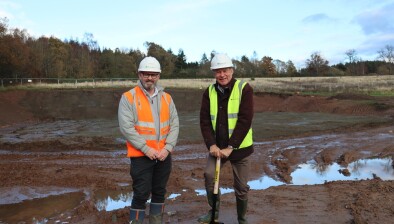Persimmon wins appeal against decision to refuse permission for brownfield development
Persimmon Homes has successfully appealed against a local authority’s decision to refuse planning permission for a new residential development.
The housebuilder’s application for a 62-home development on a brownfield site in Dundee was refused by Dundee City Council, a decision which was upheld on appeal by a reporter appointed by the Scottish Ministers.
However, the Inner House of the Court of Session allowed the developer’s appeal after ruling that the planning authority had failed to take into account a “material consideration”.
The Lord President, Lord Carloway, sitting with Lord Menzies and Lord Brodie, heard that the appellants had applied for planning permission for a residential development of 62 houses at the site of the former Kingspark School.
The local development plan (LDP), which was adopted in 2014, stated in terms of policy 8 that priority will be given to the development of the allocated brownfield and greenfield sites.
To ensure that an effective five-year supply of housing land was maintained over the plan period the sites allocated in appendix 2 would not be developed for other uses.
However, it added that housing land release on brownfield sites, in addition to the allocations set out in appendix 2, may be acceptable where it could be demonstrated that it will improve the tenure mix in an area where existing choice is limited and would make a positive contribution to the regeneration objectives of the area.
The site at the former Kingspark School was not allocated in appendix 2 of LDP 2014 or in the equivalent appendix of LDP 2, which was adopted in 2017.
But a site planning brief (SPB) specific to the Kingspark site, which was approved by the council’s city development committee in 2016, identified 2.85 hectares of land as suitable for housing, with 1.60 hectares of retained open space.
Persimmon applied for permission to develop the site for 62 privately-owned houses, but despite a report by the local authority’s executive director for city development which concluded that the proposals complied with the relevant planning policies, the council refused permission on the basis that the development would not comply with policy 8 of the LDP 2014 as the site was not allocated for housing in appendix 2, or improve the tenure mix in the area.
Persimmon appealed to the Scottish Ministers, but a reporter dismissed the appeal and refused planning permission because the development was contrary to policy 8 in the LDP 2014, which was specific about the tests to be met before brownfield land would be released for housing.
While the site was brownfield, Persimmon had not demonstrated that development would improve the tenure mix in the “local area”, and the new homes would not contribute to any specific regeneration objectives – and the reporter stated that it was for the appellant to present a “compelling case” to satisfy the policy tests.
On appeal to the Court of Session, it was argued that the reporter failed to take account of material considerations contained in a report by the council’s director of city development; erred in his interpretation of the relevant local development plan; and/or failed to give proper, adequate and intelligible reasons for his decision.
Allowing the appeal, the judges observed that dismissal of the SPB meant that the reporter regarded it as “effectively irrelevant”.
“On the contrary,” the Lord President said, “it ought to have been regarded as a material consideration in the determination of the appeal”.
The failure to take this material consideration into account was sufficient to determine the appeal and to quash the decision, but the court went on to express its views on the meaning of the relevant policies as a matter of law for the benefit of the reporter in the event of re-consideration.
Delivering the opinion of the court, Lord Carloway said: “First, the third paragraph of policy 8 in the LDP 2014 ought not to be construed in a negative way and regarded as a means of preventing development.
“It should be seen as a positive statement which permits housing development on brownfield sites, even if they are not (as the Kingspark site effectively is, in terms of the SPB) included in the relevant appendix.
“Secondly, in relation to the need for a contribution to the ‘regeneration objectives of the area’, in the absence of there being any such objectives ‘stated’ in the development plan, it is unreasonable to qualify them by adding, as the reporter did, that word.
“The objectives are already set out in the SPB. These are that the ground is regenerated by being put to a structured use with a balance of housing and maintained open space for general community use.
“In all of this, and, as stated above, approaching policy 8 in a positive way, there is no requirement for an appellant to present ‘a compelling case’.”










